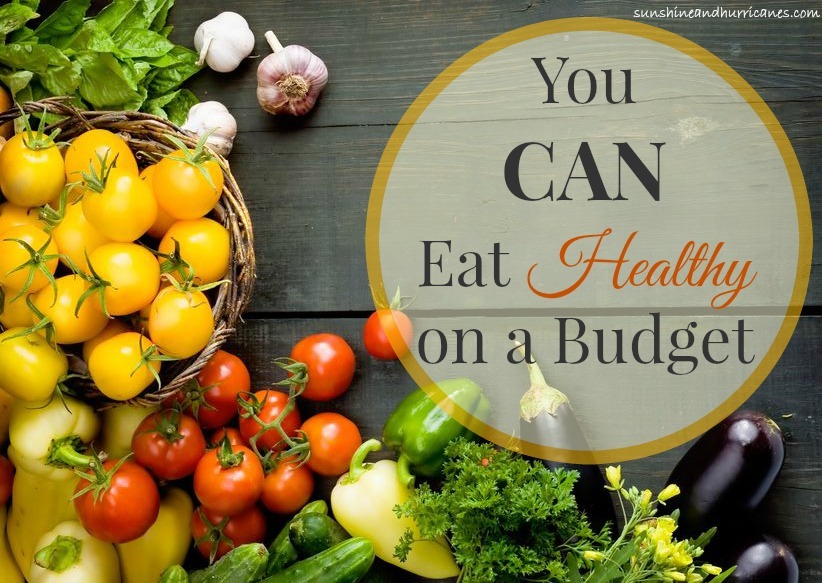You CAN Eat Healthy on a Budget
We’re going to tackle the common misperception that eating better for you food means forking over bigger bucks.
You Don’t Need a Coupon for Everything and You Don’t Need to Buy Something Just Because You Have a Coupon
There is something very American about the fact that if we’re going to do something we’re going to do it all the way. Couponing definitely falls in this category. People often perceive that healthier foods are more expensive because there are rarely coupons for these items. However, at the same time, if someone is buying large quantities of processed foods and frozen meals because they can use quadruple coupons, but much of it goes bad before they can eat it all or they just get sick of eating so much of the same stinking thing is that really a deal? Also, when you have all that extra food sitting in your house it creates unnecessary temptations or makes you feel like you should eat it so it doesn’t go to waste. There are coupons in abundance for healthy staple items like whole -wheat pastas, frozen veggies, beans and brown rice that when combined with sales will allow you to purchase these items for next to nothing. Apply those savings to help offset the higher costs of more produce, fish or even organics.
Eat More Like a Vegetarian
No, read it again, it does not say to actually become a vegetarian; it simply says to eat more like one. If you want to reduce your grocery bill while also improving your health, one choice you can make that will have a dramatic impact on both is to eat less meat. Meatless Mondays have gained in popularity the last few years, the idea being to commit to at least one night a week of preparing a meal that doesn’t contain meat. There are so many great options these days you really won’t miss it. You may even go for Meatless Wednesdays too!
Not Ready to Be a Veggie, Fine Then Eat Smaller Portions
Even if you aren’t prepared to try the vegetarian route, cutting back the amount of meat you eat at each meal still provides significant grocery bill savings. Revisions to the Food Pyramid that came out in 2011 created My Plate, which is an illustration of a dinner plate divided into four equal quadrants. The new recommendations suggest that you fill at least two of the quadrants with fruits and vegetables and another quadrant with healthy whole grains, leaving only one single quadrant for meat or protein. When you adopt this approach to eating an amazing thing happens, you get full faster and stay full longer. Adding more produce, legumes and whole grains to your diet gives your body more of the nutrition it requires and helps you feel satisfied by the end of the meal. As a result, you’ll begin to eliminate those second helpings as well as in between meal snacking on less healthy options. Overall, you’ll find you’re eating less and therefore buying less.
To Organic or Not to Organic
There has been considerable media attention over the last decade about eating organically. The reality is that the goal should be to increase your family’s consumption of fruit and veggies, better to do it with the regular stuff than not do it all. If you’ve wanted to try organic, but the price tag scares you off, consider just purchasing “The Dirty Dozen” organically. These are items The Environmental Working Group has tested and found contain the highest levels and amount of pesticides:
Peaches
Apples
Sweet bell peppers
Celery
Nectarines
Strawberries
Cherries
Pears
Grapes
Imported spinach
Lettuce
Potatoes
Another option to eat healthy on a budget is to make sure you’re eating produce that is in season. These items will be fresher, meaning they will also retain more of their health benefits, plus they will cost less. You can also consider checking out your local farmer’s market for in season fruits and veggies at potentially lower costs. It’s also possible to negotiate with the sellers at a Farmer’s market, something you can’t do at your local grocery store.
Still Don’t Think You Can Eat Healthy on a Budget?
There are books, magazine articles, blogs and several TV cooking shows that will show you exactly how to feed your family food that tastes good, is good for you and that in most cases can be done for under $10 for the whole family per meal. Check out any of the following resources:
Blogs:
100 Days of Real Food: 100 Days on a Budget
Eating Richly Even When You’re Broke
Books:
Ten Dollar Dinners: 140 Recipes & Tips to Elevate Simple, Fresh Meals Any Night of the Week
The Biggest Loser Cookbook: More Than 125 Healthy, Delicious Recipes Adapted from NBC’s Hit Show
The EatingWell Healthy in a Hurry Cookbook: 150 Delicious Recipes for Simple, Everyday Suppers in 45 Minutes or Less










[…] that we’ve sent our little sweethearts back to school and we’re trying to settle back into a budget routine. We might be feeling a little bit of a squeeze after purchasing new school supplies and […]